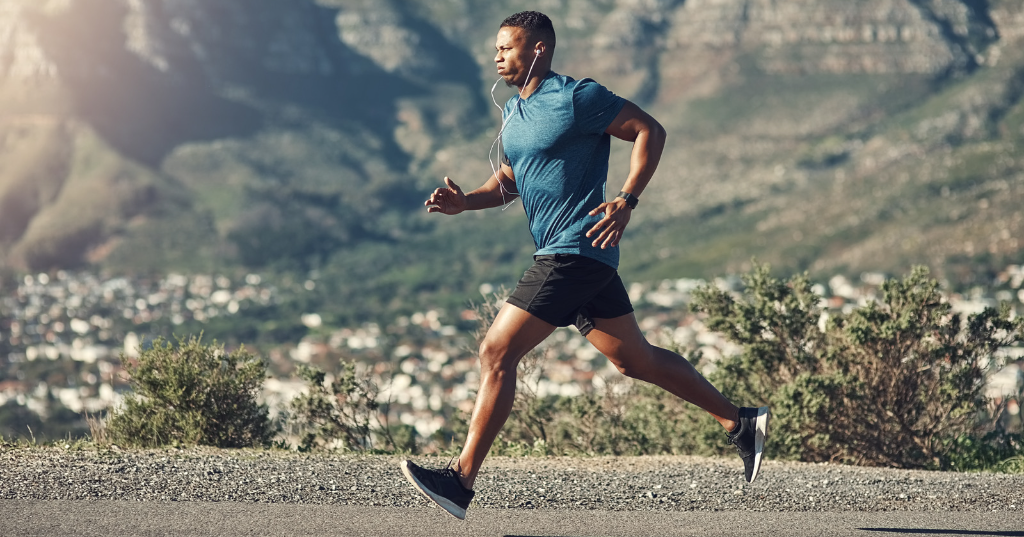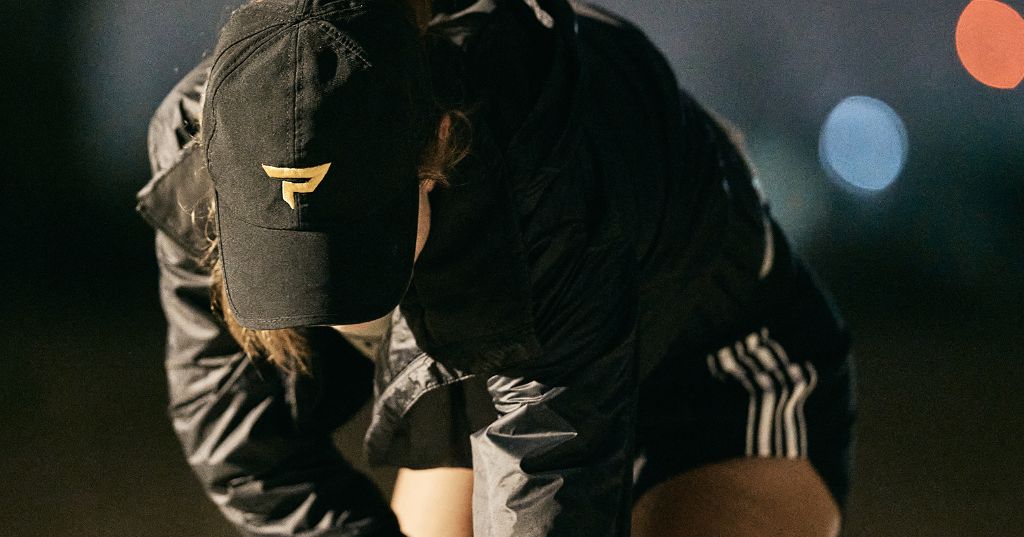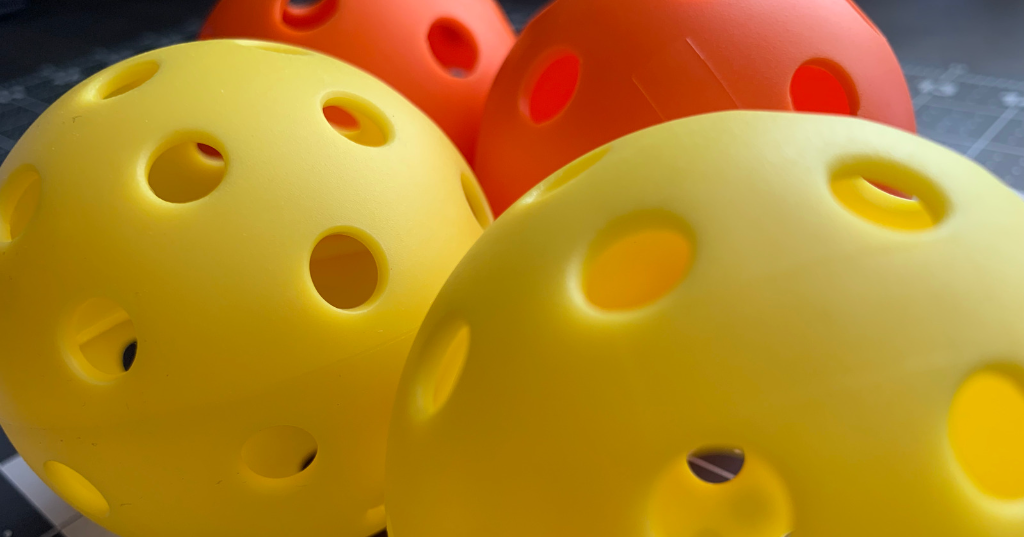No matter how skilled you are, a lack of endurance can hurt your performance. If you’ve ever had a strong start in a pickleball game then faded away and lost in the end, you know the importance of endurance. To keep your skills sharp and feet quick, you should spend some time off the court improving your fitness.
Building endurance for pickleball requires training the cardiovascular system. To do this, incorporate medium-intensity activities like jogging, which focuses on building your overall endurance. High-intensity training can also help because of the short bursts of energy used in pickleball.
Gain an edge on the court as you strengthen your cardiovascular capabilities - move faster while remaining energized and focused in pickleball matches. You might even be able to beat opponents who are more skilled than you if the match lasts long enough for fitness to become a factor. A classic tortoise and the hare scenario. Keep reading to learn 7 of the best activities for building pickleball endurance.
What Are the Best Forms of Endurance Training for Pickleball?
Before jumping into the best workouts for endurance, it’s helpful to think about the demands pickleball places on your body. And there's no better place to start than the battlefield, AKA the pickleball court.
One side of the court is 22 feet long from net to baseline. Each service area is 15 feet long and 10 feet wide.
If you’re playing singles, that means you need to be able to run 20 feet or more to the left or right to cover the court laterally, and 22 feet to go from baseline to net. And if your opponent likes to watch you run, you can end up covering a lot of ground quickly.
Unlike soccer, which is a continuous effort for 45 minutes or more, pickleball has a lot of starting and stopping. You’ll sprint around the court chasing the ball until a rally ends, then you have a second to catch your breath and reset.
The form of training that most closely mimics this is interval training, as it's more specific to the demands pickleball places on your body.
Before you boo this idea off the stage, think about tennis and the similarities between it and pickleball. The International Tennis Federation, recommends two types of training for tennis players: longer endurance training (30-60 minutes) or shorter, more intense training (20-30 minutes).
It's not an apples-to-apples comparison, but there's certainly a striking resemblance. Pickleball could be considered moderate or vigorous intensity depending on how fast-paced your match is, so both longer endurance and shorter interval training are helpful forms of building your endurance for pickleball.
Keeping that in mind, let's look at how you can bring each style of cardio-building training to life.
7 Ways to Improve Endurance for Pickleball
In case you had the crazy thought to jump up from your office chair and immediately start any of the following 7 exercises, make sure you do some dynamic stretching to get your body warmed up first.
If you don't know what dynamic stretching is or why you should do it, then read this first and follow the 5 stretches step by step. What you'll find inside is proof that everyone was taught how to stretch improperly.
So learn the right way to stretch before your exercise, and then follow static stretching after your workout. Now then, let's investigate 7 novel ways you can build your pickleball endurance.
1. Running - Difficulty 3 / 5
With no fancy equipment needed, running is an easy-access activity for all levels of fitness. Plus, if you've ever seen a pickleball match – or even played one! – you know how essential the ability to run can be when it comes to outmaneuvering your opponents.
The sport can make you run quite a bit, especially in singles. So building your cardio by running off the court is a great way to prepare your body for a game.
Running is almost entirely a lower-body activity, so it won’t help your upper-body endurance very much. However, getting your legs ready to run around the court will help you get to the ball and hit better shots by positioning alone.
How Much Running Should You Do to Train for Pickleball?
The Centers for Disease Control and Prevention (CDC) recommends about 75 minutes of running or jogging per week. Start slow if you’re not a runner. That means not hitting the 75-minute mark your first week. Instead, work toward that duration as a goal.
You don’t need to get your running for the week done in one trip out per week either. Rather, break it up over a few days.
For instance, if the last time you ran you wore a varsity letter, set your goal at something like 45 minutes for your first week. You're going to run 15 minutes every Monday, Wednesday, and Saturday. After your first couple of weeks, consider adding a couple of minutes to each day.
Before you know it, you'll be exceeding your 75-minute goal per week.
And for those of you who love to find loopholes, this doesn't include your running time on the courts. The running goal is strictly intentional running as part of training. So don't cheat yourself instead, take time to do a run on the treadmill or outdoors.
Track your run so that you know how far you’ve gone and how quickly you’re running. You can slow things down and make your run a moderate-intensity activity, or speed up and make it vigorous.

2. Cross-Country Skiing - Difficulty 5 / 5
To all the Floridians and Carolinians out there, this one might be tough to do regularly. But if you live in the Northern US, you might be ignoring one of the best endurance training options around, and that would be cross-country skiing.
Perhaps skiing doesn’t come to the top of your mind when you think about aerobic training for pickleball, but it should. Winter is a tough time of year to get enough activity to stay in shape. If your pickleball courts are outdoors you might not have access to them during the winter.
To avoid getting out of shape during the winter months, consider cross-country skiing. While it might seem like a pain to gear up and head outside into the harsh conditions of winter, your body will benefit greatly.
Cross-country skiing is considered one of the best forms of overall cardio. Sure, running is great because it builds endurance in your legs, but it does squat for your arms. And if your mind just jumped to rowing and swimming, then yes, those are also two excellent forms of cardio, but they use a lot of your upper body and not enough legs.
Enter cross-country skiing, which uses your arms, legs, and core. You might think of cross-country skiing being a good form of exercise for pickleball, but it's strangely similar. Pickleball is demanding on the upper body, lower body, and trunk muscles. It might not be convenient or even accessible for you to do it, but if it's an option, give it a shot during your off-season.
If this isn't an option, which is reasonable, there are most likely machines at your gym that mimic this movement. While it won't recreate the full experience of skiing, it's still beneficial for building your endurance.

3. Strong and Easy Row Intervals - Difficulty 3 / 5
Wanna up your pickleball game? You didn't think the answer was a trip to the gym, did you? But if you want an edge when it comes to stamina - hop on a rower. Of course, you could buy one for yourself, but that can get pricey. However you get your hands on one, it'll be worth every minute or penny.
Rowing gives you a great workout while cushioning your joints - no harsh impacts like running! Smooth sailing, so to speak.If you've never rowed before, brace yourself for a workout that will demand strength from your legs, arms, and back - not to mention working up an intense sweat!
When it comes to rowing, good form is a must - you wouldn't want to compromise your time on the courts because you injured yourself training for it. So before taking off in the rowing machine, make sure you invest some time in polishing up those oar strokes. Once you know what you're doing in a rower, begin the following workout.
Rowing Workout to Build Pickleball Endurance
The total time it takes to complete this workout is 20 minutes. For the workout, you’ll row at a fast pace for 1 minute, then lower the intensity for a minute before beginning again. Repeat this until you’ve completed 20 minutes.
A helpful recommendation is to watch your strokes per minute, which most rowing machines can monitor. You want to stay around 20 and 24 strokes per minute for this workout to make sure you’re working at the proper intensity.
This workout is a mix of vigorous intervals and long-duration endurance activity. Keep in mind that you should have a significantly different pace between the work and rest periods.

4. Boxing Workout - Difficulty 5 / 5
When you think of boxing and pickleball, it might not seem like they have a whole lot in common. But if you look closer, the motion for throwing a punch looks an awful lot like swinging that paddle! In both sports, your feet need to stay planted while your hips and shoulders twist and generate force to push forward.
For that reason, boxing is uniquely helpful to your pickleball game - endurance and mechanics all in one cross-training exercise. Learning technique can be tough, but with practice comes reward - you'll soon find yourself in tip-top shape.
If you're about to scroll quickly past this recommendation because the thought of boxing an opponent gives you pause, then you'll appreciate that you don't need to step into the ring to get the same workout as a boxer.
In a study that compared running on a treadmill to boxing in a ring, the researchers found that a 3-minute round of boxing is just as intense as running on a treadmill until complete exhaustion.
From the study, it was set up in a way where the boxing was intense from the start of each round until the end, whereas running became more difficult over time. It's worth noting that the boxing was just punching gloves, not actually punching at an opponent - so think of it more as practicing drills.
In other words, you don’t need to fight someone to get a good workout from boxing. But you don't even need someone to hold gloves to punch - simply get a heavy bag.
This is an intense workout and you don’t need to do more than 3 rounds of 3 minutes to push your body to the limit. Pretty efficient don't you think?

5. Brisk Walking - Difficulty 2 / 5
While not the most intense activity, walking can keep you active when you’re not on the court. And every fitness expert will tell you that walking is far better than sitting. It can give you a little boost in your endurance for pickleball to boot.
A good goal for walking is to work up to 150 minutes per week at a fast pace. So this isn't a sightseeing pace to take in the smells and sounds. Your goal is to walk quickly without pausing.
At first, start slow. You can stop after 15 to 20 minutes if it becomes difficult. Over time, you can walk more and more frequently and for longer durations. While 150 minutes per week is a goal, you can surpass that if you find you have the energy.
If walking is too easy but you find running too challenging or painful, try walking up hills or climbing stairs. Some gyms have stair climbing machines you can use for the same effect, or you could use the stairs in your house, bleachers at a local school, etc. Hiking hills and mountains can be a good workout as well, and once you make it to the top, that would be a good time to pause and take it all in.
6. Bodyweight HIIT Circuit - Difficulty 3 / 5
For those who find that traditional cardio isn't quite giving them the jolt they need, it might be time to switch things up and go for a HIIT workout. Not only does this form of training target muscles for strength-building, but you'll also get your heart rate going with its intense intervals - making sure no second is wasted.
By doing bodyweight exercises in rapid succession, you can build your cardiovascular system quickly and effectively.
In fact, HIIT training can be as effective as longer-duration cardio at improving your aerobic fitness. Be warned, this style of training can be intense, so you shouldn’t do it more than twice per week when you first introduce it into your training program.
Here’s a sample HIIT workout from the American Council on Exercise:
- Step 1: Perform side-to-side lunges for 8-15 reps on each leg
- Step 2: Do 8-15 push-ups. At the top of each push-up, lift one leg off the ground then put it back down.
- Step 3: Squat 8-15 times. At the bottom of each squat, pause and pivot on one foot so that you turn your entire body 180 degrees.
- Step 4: Step back into a lunge with one leg. Then, step forward and raise the knee of the back leg in front of you. Perform 8-15 reps on each leg.
- Step 5: Lie on your back and do bicycle crunches, bringing your opposite elbow and knee together before switching sides. Do 8-15 reps on each side.
These movements strengthen your core, upper body, and lower body, all of which are important for pickleball.
Do each exercise as fast as you can with proper form. After you’ve done each exercise once, take a small break to catch your breath. You can repeat this circuit up to 4 times total if once wasn’t enough.

7. TABATA Bike Sprints - Difficulty 4 / 5
Tabata Training is the perfect solution for all those of us who, try as we might, just can't seem to squeeze in any extra fitness - other than a game or two of pickleball. In only 4 minutes you can get a workout that rivals the aerobic benefits of HIIT and endurance training.
A Tabata workout is 20 seconds of all-out effort, followed by 10 seconds of rest to catch your breath. You repeat that 8 times for a total of 4 minutes. The trick is to put as much effort as you can into each working set.
At the end of the workout, you should be exhausted, but over time you’ll improve your endurance.
You can do a Tabata cycling workout to minimize impact and train your legs for pickleball. A stationary bike is best for this kind of workout because it’s so short and intense. Pedal as hard as you can for 20 seconds, slow down for 10 seconds, then repeat until you’ve done all 8 rounds.
Of course, you should warm up for a few minutes and cool down after the workout. In total, you shouldn’t spend more than 10 minutes on this workout.
Play At Your Peak With Improved Endurance
Pickleball pros know that having an edge on the court comes from more than just perfecting your technique - playing your best means training with endurance in mind. So if you want to stay sharp and power through those long matches, make sure you put some work into building up your stamina.
There are countless ways to strengthen your cardiovascular system. Whether you're keen on walking and hiking or full-on boxing bouts, there's something out there to help get your cardiovascular system in tip-top shape. So take this as an opportunity to explore different sports and activities; who knows, maybe nordic skiing is what takes your workout game up another notch!
Whatever you choose, start slowly. When adding something fresh to your fitness routine it's easy to eagerly overdo it. It may take some time for your body to become accustomed, but that same effort will give you an energized edge on the court.
Jumping right in can lead to sore muscles and missed shots; so make sure you ease into any new activity with care. Over time, you should notice that you have more energy to run for the ball or hit more powerful shots.




Leave a comment
This site is protected by hCaptcha and the hCaptcha Privacy Policy and Terms of Service apply.